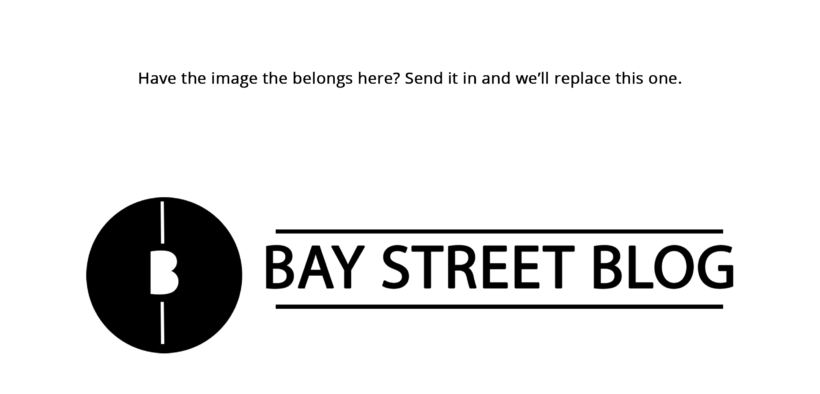NEO Exchange: Disrupting Bay Street?
Share

Launched on March 27th, 2015, the role of Aequitas NEO exchange is to redefine the Canadian Stock Market, and to give investors an exchange they can believe in. This stock exchange is taking a different approach to the Canadian capital market, disrupting the industry.
It’s common knowledge that there are more stock exchanges on Wall Street, such as the New York Stock Exchange, and NASDAQ. In Canada, the Toronto Stock Exchange has the majority of the market share.
640 days prior to the launch of the NEO Exchange, Aequitas Innovations announced its plans to make markets better. They believed that there is lack of competition within the Canadian capital markets, affecting investors confidence. The lack of competition within the Canadian capital markets is also a contributing factor to the fact that investing in Canada is 100x ore expensive compared to the United States, for retail investors (NEO Exchange).
NEO Exchange aims to apply competitive pressure, and to drive the costs down of the Canadian Market data. Within the NEO Exchange, there will be a limitation of High Frequency Trading, by applying a market delay. With a lower trading cost, the exchange would promote liquidity, and improve the transparency of trading activity.
NEO Exchange’s vision:
“Restore focus to the original purpose of an exchange – bringing together investors looking to build wealth with companies looking to raise money for growth, as a central force driving the Canadian economy forward.”
The main objective of the NEO Exchange is to break the “virtual” Canadian Market Data Monopoly, increase the competition within capital markets, and eliminate/reduce the incentives for High Frequency Trading.
High Frequency Trading
High Frequency Traders are known to take advantage of market data per each millisecond. It’s an automated trading platform used by large investment banks, hedge funds, and institutional investors. This trading strategy executes orders based on market conditions, using a computer algorithm that analyzes different markets. In 2009, it was estimated that more than 50% of the exchange volume comes from high frequency trading orders (Investopedia).
By recognizing the market trends (arbitrage opportunities), the systems send out hundreds of baskets of stocks out in the market place at bid-ask spreads. Spreads may be about 1 cent per share, however, multiplying that by a large number of daily transactions can lead to large profits for traders.
How does High Frequency Trading Work?
High Frequency Trading may be a complex topic for some people – just think of it as the middleman taking the cut out of each deal. It involves a continuous pattern of buying and selling at different markets, when pre-programmed algorithms recognize an arbitrage opportunity.
Let’s say, Trader X places an Order for Stock Y, 100 shares at the market price. There are 80 shares of Stock A available at $19.90, and 20 shares of Stock A available at market B, at the same price of $19.90. For Trader X, 80 of the shares are fulfilled at Market A, at $19.90. However, Trader X still has 20 shares left before his order becomes fulfilled. Within milliseconds, High Frequency Traders see that there was an order for 100 shares at market price. Since Trader X has fulfilled 80% of the order in Market A, the rest will be fulfilled in Market B.
This is where High Frequency Traders see an arbitrage opportunity. High Frequency Traders purchase 20 shares of Stock Y in Market B at the price of $19.90, milliseconds before Trader X. The High Frequency Trader then resells the 20 shares to Trader X at a slightly higher price (i.e. $19.91 – $19.95). The repetition of this arbitrage strategy leads to decent profits for High Frequency Traders.
Here is a useful video that provides a visual of how High Frequency Trading works can be seen on Canadian Business (How Aequitas thwarts high-frequency traders, explained with Timbits).
Eliminating HFT: NEO’s Strategy
As seen in the example, time is a crucial aspect of High Frequency Trading – every millisecond counts. The NEO Exchange aims eliminate the impact of High Frequency Trading by imposing a market delay of 5 – 9 milliseconds.
High Frequency Trading is a controversial topic – some investors find it unethical. It does provide a bigger advantage for institutional firms with HFT capabilities, compared to individual investors. Mark Cuban stated that there is lack of trusts in the markets for the ordinary investors (Wall Street Journal).
The profitability of High Frequency Traders is greatly dependent on time, with techniques emphasizing the fact that time is money. Imposing the market delay will reduce the incentives obtained from High frequency Trading.
Canadian Market Data Monopoly
Virtually, there is a monopoly in the Canadian Market Data. This means that Canadian investors & domestic investment advisors only have access to a portion of what’s going on. Having access to only a portion of what is going can lead to uninformed investment decisions. 2% – 5% of Canadian Investment advisors have access to consolidated market data for TSX and TSXV-listed securities, and only 10%- 15% of North American Investment Advisors have access to Canadian real-time market data (NEO Exchange).
Market Data
Market Data refers to quoted prices, and trading related information for a certain stock. According to the NEO Exchange, TMX fees for retail investors is 100 times more expensive than US fees (TMX: $10, US: $0.01), and 13 times more expensive for professional users (TMX: $46, US: $3.5).
How Market Data Works
Canadian Trading Landscape
Prior to 1999, public securities were listed and traded on the Toronto Stock Exchange (TSX), Montreal Stock Exchange, and Vancouver, Calgary, and Winnipeg. In 1999, the Toronto Stock Exchange (TSX) became Canada’s sole platform for listing senior equities, and Canadian Venture Exchange (now known as TSX Venture Exchange) is the sole platform for trading junior equities.
Today, TSX accounts for the majority of the trading activity in Canada. However, there is one problem that exists within the Canadian Capital Markets: lack of access to consolidated market data. Close to 0% of retail investors using the direct investing platforms have access to consolidated market data, leading to ineffective decision making (NEO Exchange).
Aequitas CMV Connect – Leveraging Private Market Data
The Consolidated Market View (CMV) is one of the features that the NEO Exchange has to offer; this feature will be built on leveraging private market data. CMV’s data source will include all of the information relating to a consolidated view of the trader’s activity, across all trading venues. This source of data has the potential to be superior to some other sources, since it’s is a consolidation of dealers participating. NEO Exchange also mentions that all confidential information is protected and no information leakage can occur.
Pricing
Currently, there is a TMX fee for data, which is $55/user. However, the CMV connect fee for data will be $25/user, which would be a savings of $0.8 million (NEO Exchange). Theoretically, cheaper trading costs will lead to higher liquidity, potentially increasing the investing activities for the Canadian Capital Markets.
Conclusion
The NEO exchange is a unique addition to the Canadian Stock Market. NEO Exchange believes that data is important to have access to, in order to make sound investment decisions. The exchange is tackling the problem of High Frequency Trading taking advantage of each millisecond, and Canadian investors having limited market data. Reducing the costs of investing in Canada would be beneficial for the Canadian Stock Markets – as there would be a potential increase in fund inflows, since the stock markets would be liquid.
Writer: Jelani Smith
Disclaimer: All investing can potentially be risky. Investing or borrowing can lead into financial losses. All content on Bay Street Blog are solely for educational purposes. All other information are obtained from credible and authoritative references. Bay Street Blog is not responsible for any financial losses from the information provided. When investing or borrowing, always consult with an industry professional.







Bay Street Blog Newsletter
Click here to subscribe for a financial savvy experience.
Please check your email to confirm subscription!